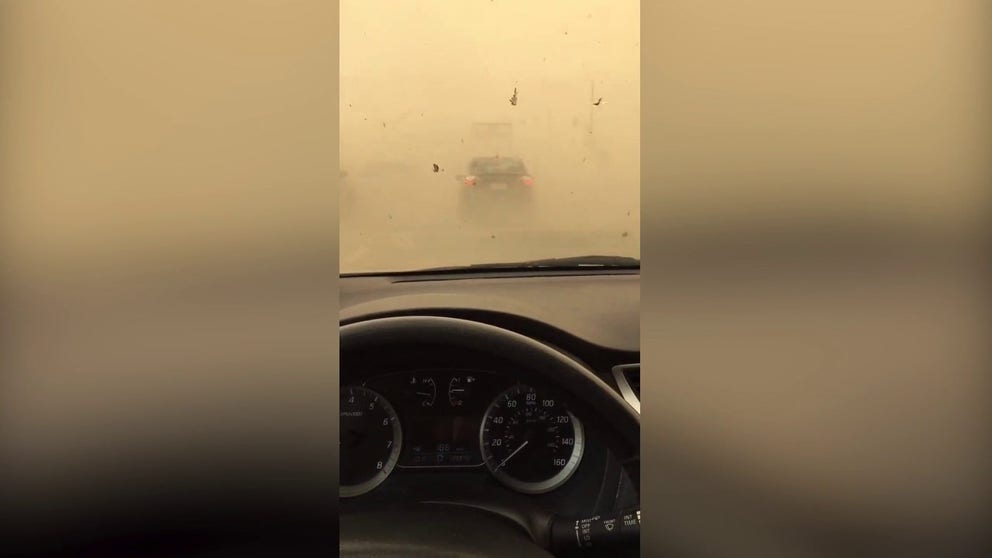Watch: Driver caught in thick dust storm near California-Mexico border
This footage shows vehicles that ended up parking on a road in Calexico, California, as thick dust sweeps by, causing near-zero visibility.
California driver gets caught in dust storm near Mexico border
Video shows the dramatic scene of a California driver getting caught in a dust storm near the Mexico border.
CALEXICO, Calif. -- A driver got caught in a massive dust storm in Southern California on Thursday, showing the dangers these sudden storms can bring to the highways.
This footage shows vehicles that ended up parking on a road in Calexico as thick dust sweeps by, causing near-zero visibility.
In this instance, traffic appears safely stopped, but there have been countless instances of major crashes as the result of a sudden loss of visibility. Earlier this year, six people were killed in Montana when a sudden dust storm crossed Interstate 90 near Hardin.
HOW TO WATCH FOX WEATHER ON TV
The National Weather Service, spotting the dust storm in progress from a cluster of thunderstorms in southeastern California, had issued a Blowing Dust Advisory for the region Thursday evening.
How do dust storms form?
Dust storms typically owe their heritage to strong thunderstorms, which create intense downdrafts.
WHAT IS A HABOOB? IT'S JUST DUST IN THE WIND
Heavy rains or a collapsing thunderstorm can bring an enormous rush of cold air racing toward the ground.
As the air hits the ground, it rushes outward -- think of what happens when you drop a water balloon, and it explodes on the ground sending water rushing out in all directions, only in this case, it's air rushing outward.
The front edge of the air rush — known as an outflow boundary or gust front — will scoop up a lot of the dust and dirt on the barren landscape and carry it along, creating what amounts to a dust front. Wind speeds can reach damaging levels if the outflow is strong enough.
What to do if you're suddenly caught in a dust storm while driving
The first rule of driving through a dust storm is to try to avoid it in the first place. If you see a wall of dust ahead, try to alter course.
If you end up in the dust and there is an option, pull your vehicle off the pavement as far as possible, stop, turn off lights, set the emergency brake, and take your foot off of the brake pedal to be sure the tail lights are not illuminated, the National Weather Service advised.
If you can't pull off the roadway, proceed at a speed suitable for visibility, turn on lights and sound the horn occasionally, according to the NWS. Use the painted center line to help guide you. Look for a safe place to pull off the roadway.
The worst option is to stop in the middle of the road, inviting a chain reaction crash from those who are still driving and won't see your stopped vehicle until it's too late.
"Never stop on the traveled portion of the roadway," the NWS warned.
